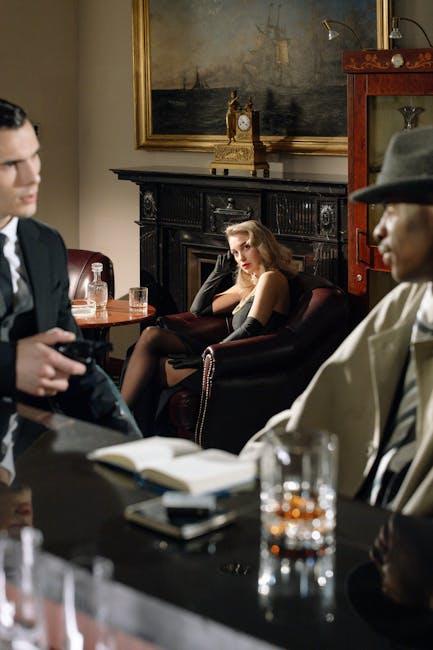Building Cinematic Story Arcs with Nonlinear Editing Techniques
Crafting an engaging cinematic story arc is essential for filmmakers aiming to captivate their audience from start to finish. In the modern world of video production, nonlinear editing (NLE) techniques have revolutionized how stories are constructed, allowing editors limitless creative freedom to shape narratives in dynamic, compelling ways. This article will explore how you can build powerful cinematic story arcs by leveraging nonlinear editing tools, providing practical tips, benefits, and insightful case studies to help you master this craft.
What Are Nonlinear Editing Techniques?
Nonlinear editing refers to the digital process where editors arrange, cut, and manipulate video footage non-sequentially. Unlike traditional linear editing, which requires edits to be made in order, nonlinear editing systems give full freedom to jump anywhere in the timeline and make changes instantly. Popular NLE software includes Adobe Premiere Pro, Final Cut Pro, and DaVinci Resolve.
Key Features of Nonlinear Editing
- Random access to any frame or clip at any time
- Multiple video and audio track layering
- Advanced visual effects and transitions
- Real-time playback and editing
- Efficient organization with bins and metadata tagging
Understanding Cinematic Story Arcs
A story arc is the narrative journey your film takes – the emotional highs and lows that engage your audience and give meaning to the visuals on screen. Classic arcs include the hero’s journey, three-act structure, and nonlinear narratives that interweave past, present, and future.
Common Cinematic Story Arcs
| Story Arc | Description | Example Films |
|---|---|---|
| Three-Act Structure | Setup, confrontation, and resolution in sequential order. | Star Wars, The Godfather |
| Nonlinear Narrative | Events presented out of chronological sequence. | Pulp Fiction, Memento |
| Hero’s Journey | Hero leaves ordinary world, faces challenges, returns transformed. | Lord of the Rings, Harry Potter |
How Nonlinear Editing Enhances Story Arc Construction
Nonlinear editing offers unprecedented flexibility in storytelling. By rearranging scenes or cutting together footage non-sequentially, filmmakers can:
- Manipulate Time: Flashbacks, flash-forwards, and parallel timelines become easy to weave into narratives.
- Control Pacing: Adjust story tempo by experimenting with scene duration and sequence order.
- Build Suspense: Nonlinear editing enables editors to strategically reveal information to keep viewers engaged.
- Experiment Freely: Scene placement and emotional beats can shift fluidly without destructive editing.
Practical Tips for Building Cinematic Story Arcs with Nonlinear Editing
1. Plan with a Flexible Timeline
Start with a rough outline of your story arc, mapping key events and emotional beats but be ready to shuffle scenes around freely. Use markers and color coding in your NLE software to label important story moments.
2. Use Multicam and Layered Clips to Show Different Perspectives
Layering clips in multiple tracks allows editors to cut between perspectives-like alternate character views or parallel events. This deepens plot complexity and emotional resonance.
3. Leverage Jump Cuts and Match Cuts
Jump cuts can create rhythm and highlight urgency, while carefully planned match cuts maintain visual continuity across nonlinear sequences.
4. Integrate Visual Effects Subtly
Blend visual effects to enhance nonlinear elements like flashbacks or dream sequences, ensuring they support the story arc rather than distract.
5. Constantly Review and Revise Your Edit
Take advantage of nondestructive editing to experiment with multiple versions of the story arc. Get fresh eyes to review edits and gather feedback to refine narrative flow.
Benefits of Nonlinear Editing for Cinematic Storytelling
- Creative Freedom: Unrestricted control over story structure and timeline.
- Efficiency: Quickly navigate and modify your project without damaging original footage.
- Enhanced Collaboration: Multiple editors or creatives can work concurrently on different parts of the timeline.
- Improved Storytelling: Ability to craft complex, layered narratives that resonate deeply with audiences.
Case Study: How Pulp Fiction Revolutionized Storytelling through Nonlinear Editing
Quentin Tarantino’s Pulp Fiction is a prime example of how nonlinear editing techniques can be masterfully used to build a cinematic story arc that defies linear storytelling rules. The film’s events unfold out of chronological order, creating a mosaic of interconnected stories that heighten suspense and character development.
By utilizing nonlinear editing software, Tarantino’s editor was able to:
- Shuffle scenes to maximize dramatic irony
- Combine multiple character timelines seamlessly
- Maintain audience engagement through unexpected revelations
This example illustrates the transformative power of nonlinear editing in crafting unforgettable storytelling arcs.
Conclusion: Harnessing the Power of Nonlinear Editing to Build Cinematic Story Arcs
The evolution of nonlinear editing software has forever changed how filmmakers conceptualize and construct cinematic story arcs. By embracing the flexibility and creative freedom that NLE techniques offer, you can craft multifaceted, emotionally compelling narratives that captivate modern audiences. Whether you’re a novice or an experienced editor, understanding how to manipulate story elements non-sequentially will dramatically enhance your storytelling arsenal.
Start experimenting with nonlinear editing today and explore new ways to tell your stories – the next cinematic masterpiece could be just a sequence away.











